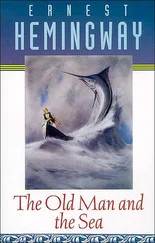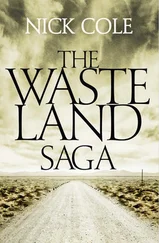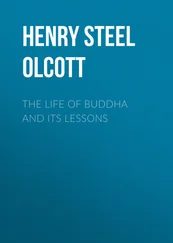William Bryan - The Old World and Its Ways
Здесь есть возможность читать онлайн «William Bryan - The Old World and Its Ways» — ознакомительный отрывок электронной книги совершенно бесплатно, а после прочтения отрывка купить полную версию. В некоторых случаях можно слушать аудио, скачать через торрент в формате fb2 и присутствует краткое содержание. Жанр: foreign_antique, foreign_prose, на английском языке. Описание произведения, (предисловие) а так же отзывы посетителей доступны на портале библиотеки ЛибКат.
- Название:The Old World and Its Ways
- Автор:
- Жанр:
- Год:неизвестен
- ISBN:нет данных
- Рейтинг книги:4 / 5. Голосов: 1
-
Избранное:Добавить в избранное
- Отзывы:
-
Ваша оценка:
- 80
- 1
- 2
- 3
- 4
- 5
The Old World and Its Ways: краткое содержание, описание и аннотация
Предлагаем к чтению аннотацию, описание, краткое содержание или предисловие (зависит от того, что написал сам автор книги «The Old World and Its Ways»). Если вы не нашли необходимую информацию о книге — напишите в комментариях, мы постараемся отыскать её.
The Old World and Its Ways — читать онлайн ознакомительный отрывок
Ниже представлен текст книги, разбитый по страницам. Система сохранения места последней прочитанной страницы, позволяет с удобством читать онлайн бесплатно книгу «The Old World and Its Ways», без необходимости каждый раз заново искать на чём Вы остановились. Поставьте закладку, и сможете в любой момент перейти на страницу, на которой закончили чтение.
Интервал:
Закладка:
William Jennings Bryan
The Old World and Its Ways / Describing a Tour around the World and Journeys through Europe
CHAPTER I.
CROSSING THE PACIFIC – HAWAII
There is rest in an ocean voyage. The receding shores shut out the hum of the busy world; the expanse of water soothes the eye by its very vastness; the breaking of the waves is music to the ear and there is medicine for the nerves in the salt sea breezes that invite to sleep. At first one is disturbed – sometimes quite so – by the motion of the vessel, but this passes away so completely that before many days the dipping of the ship is really enjoyable and one finds a pleasure in ascending the hills and descending the valleys into which the deck sometimes seems to be converted.
If one has regarded the Pacific as an unknown or an untraversed sea, the impression will be removed by a glance at a map recently published by the United States government – a map with which every ocean traveler should equip himself. On this map the Pacific is covered with blue lines indicating the shortest routes of travel between different points with the number of miles. The first thing that strikes one is that the curved line indicating the northern route between San Francisco and Yokohama is only 4,536 miles long, while the apparently straight line between the two points is 4,791 miles long – the difference being explained by the curvature of the earth, although it is hard to believe that in following the direct line a ship would have to climb over such a mountain range of water, so to speak, as to make it shorter to go ten degrees north. The time between the United States and the Japanese coast has recently been reduced to less than eleven days, but the northern route is not so pleasant at this season of the year, and we sailed on the Manchuria, September 27, going some twenty degrees farther south via Honolulu. This route covers 5,545 miles and is made in about sixteen days when the weather is good.
The Manchuria is one of the leviathans of the Pacific and is owned by Mr. Harriman, president of the Union Pacific and Southern Pacific Railways. The ship's crew suggests the Orient, more than three-fourths being Chinese, all wearing the cue and the national garb. There is also a suggestion of the Orient in the joss house and opium den of the Chinese in the steerage.
In crossing the one hundred and eightieth meridian we lost a day, and as we are going all the way around, we cannot recover it as those can who recross the Pacific. We rose on Saturday morning, October 7, and at nine o'clock were notified that Sunday had begun and the remainder of the day was observed as the Sabbath (October 8).
According to the chart or map referred to there are three centers of ocean traffic in the Pacific. Honolulu, the most important of all, the Midway Islands, 1,160 miles northwest of Honolulu, and the Samoan Islands, some twenty-two hundred miles to the south. The Society Islands, about the same distance to the southeast of Honolulu, and Guam, some fifteen hundred miles from the mainland of Asia, are centers of less importance.
Our ship reached Honolulu early on the morning of the sixth day out and we had breakfast on the island. The Hawaiian Islands (inhabited) number eight and extend from the southeast to the northwest, covering about six degrees of longitude and nearly four of latitude. Of these eight islands, Hawaii, the southernmost one, is the largest, having an area of 4,200 square miles and a population of nearly fifty thousand. Hilo, its chief city, situated on the east shore, is the second Hawaiian city of importance and contains some seven thousand inhabitants. The island of Oahu, upon which Honolulu is situated, is third in size but contains the largest population, almost sixty thousand, of which forty thousand dwell in or near the capital. The islands are so small and surrounded by such an area of water as to remind one of a toy land, and yet there are great mountains there, one piercing the clouds at a height of 14,000 feet. Immense cane fields stretch as far as the eye can reach, and busy people of different colors and races make a large annual addition to our country's wealth. On one of the islands is an active volcano which furnishes a thrilling experience to those who are hardy enough to ascend its sides and cross the lava lake, now grown cold, which surrounds the present crater. Each island has one or more extinct volcanoes, one of these, called "The Punch Bowl," being within the city limits of Honolulu. On one of the islands is a leper colony, containing at times as many as a thousand of the afflicted. During campaigns the spellbinders address the voters from boats anchored at a safe distance from the shore.
As the Manchuria lay at anchor in the harbor all day the passengers went ashore and, dividing into groups, inspected the various places of interest. By the aid of a reception committee, composed of democrats, republicans and brother Elks, we were able to crowd a great deal of instruction and enjoyment into the ten hours which we spent in Honolulu. We were greeted at the wharf with the usual salutation, Aloha, a native word which means "a loving welcome," and were decorated with garlands of flowers for the hat and neck. While these garlands or leis (pronounced lays) are of all colors, orange is the favorite hue, being the color of the feather cloak worn by the Hawaiian kings and queens in olden times. The natives are a very kindly and hospitable people, and we had an opportunity to meet some excellent specimens of the race at the public reception and the country residence of Mr. Damon, one of the leading bankers of the island.
When the islands were discovered in 1778 by Captain Cook, the natives lived in thatched huts and were scantily clothed, after the manner of the tropical races. They were not savages or cannibals, but maintained a degree of civil order and had made considerable progress in the primitive arts. In their religious rites they offered human sacrifices, but they welcomed the white man and quickly embraced Christianity. American influence in the islands reaches back some seventy-five years, beginning with New England missionaries, many of whose descendants have made permanent homes here. Some of these, mingling their blood with the blood of the natives, form connecting links between the old and the new civilization. Foreign ways and customs soon began to manifest themselves and long before annexation the native rulers built buildings after the style of our own architecture. The Capitol building, erected twenty years ago for the king's palace, is an imposing structure, and the Judiciary building is almost equal to it. The parks and public grounds are beautiful and well kept, and the business blocks commodious and substantial. In short, Honolulu presents the appearance of a well built, cleanly and prosperous American city, with its residences nestling among palm trees and tropical plants. Good hotels are abundant. The Alexander Young hotel is built of stone imported from the States and would do credit to a city of half a million. The Royal Hawaiian hotel, even more picturesque, though not so large, and the Moana hotel, at the beach, vie with the Young in popularity.
The program for our day's stay began with a seven mile automobile ride to the Pali, the pass over which the natives cross to the farther side of the island. The road is of macadam and winding along a picturesque valley rises to a height of about 1,200 feet. At this point the eye falls upon a picture of bewitching beauty. Just below is a precipitous cliff over which a conquering king, Kamehameha the First, about one hundred and ten years ago, drove an opposing army when he established himself as ruler of the islands. To the east from the foot of the cliff, a thousand feet down, stretches a beautiful valley with an endless variety of verdure; and beyond, a coast line broken by a rocky promontory, around whose base the waters reflect from their varying depths myriad hues of blue and green. There are ocean views of greater expanse, mountain views more sublime and agricultural landscapes more interesting to a dweller upon prairies, but it is doubtful whether there is anywhere upon earth a combination of mountain, valley and ocean – a commingling of the colors of sky and sea and rock and foliage – more entrancing. Twice on the way to Pali we passed through mountain showers and were almost ready to turn back, but the members of the committee, knowing of the rare treat ahead, assured us that Hawaiian showers were of short duration and "extra dry." When we at last beheld the view, we felt that a drenching might gladly have been endured, so great was the reward.
Читать дальшеИнтервал:
Закладка:
Похожие книги на «The Old World and Its Ways»
Представляем Вашему вниманию похожие книги на «The Old World and Its Ways» списком для выбора. Мы отобрали схожую по названию и смыслу литературу в надежде предоставить читателям больше вариантов отыскать новые, интересные, ещё непрочитанные произведения.
Обсуждение, отзывы о книге «The Old World and Its Ways» и просто собственные мнения читателей. Оставьте ваши комментарии, напишите, что Вы думаете о произведении, его смысле или главных героях. Укажите что конкретно понравилось, а что нет, и почему Вы так считаете.












